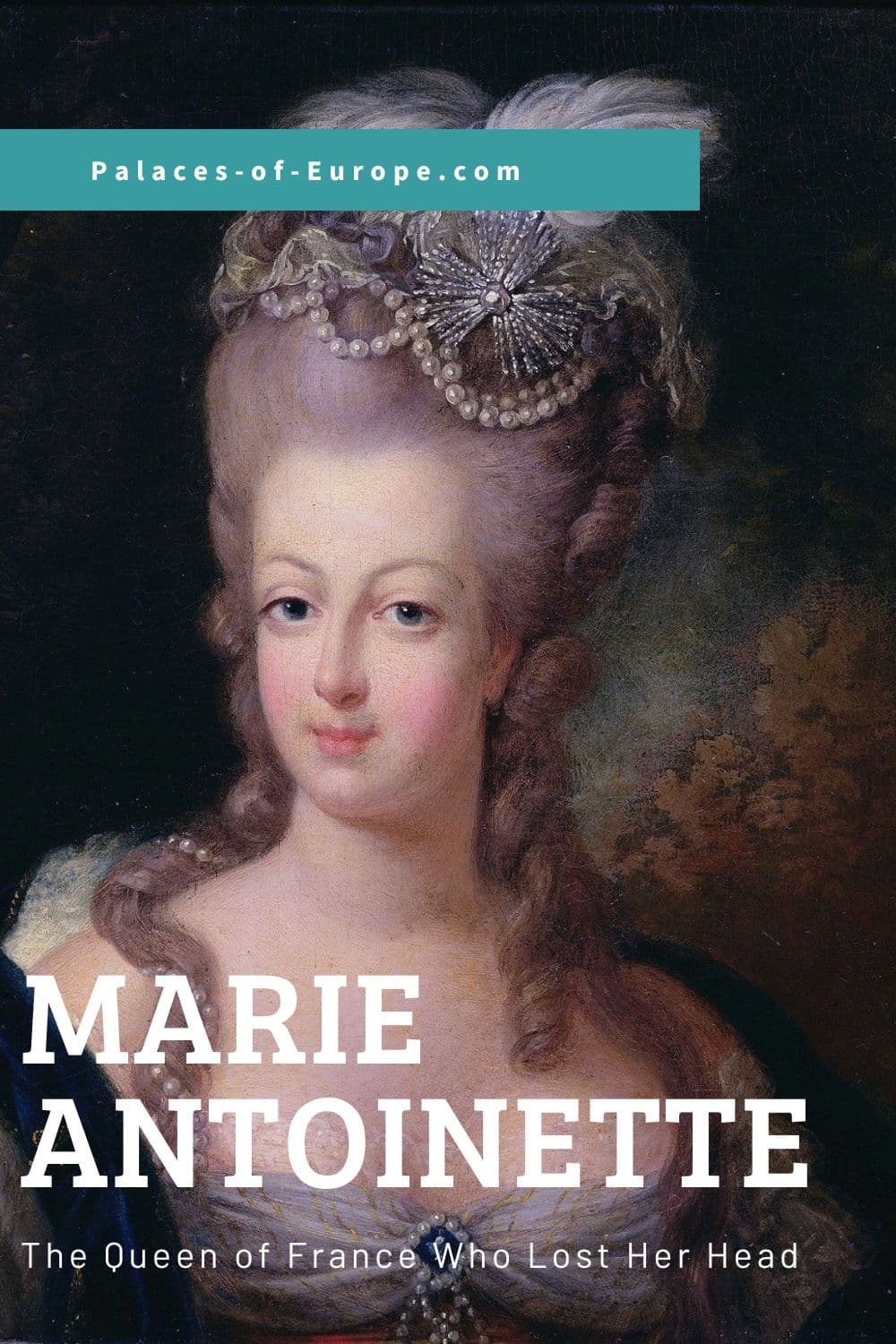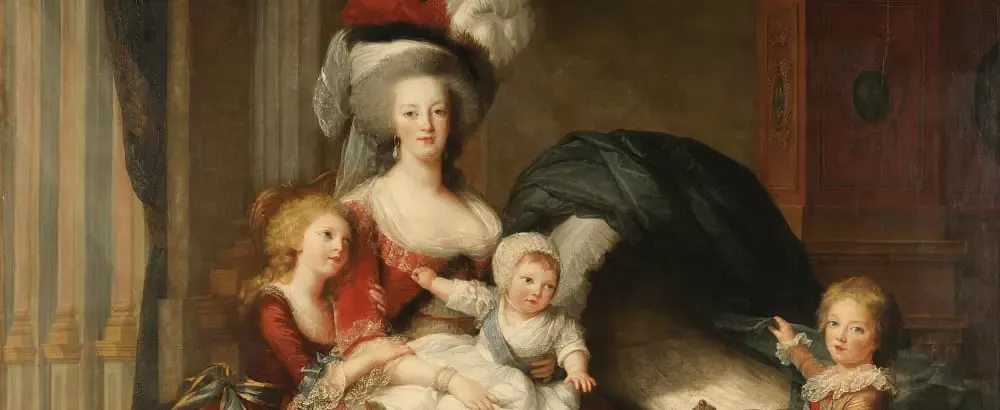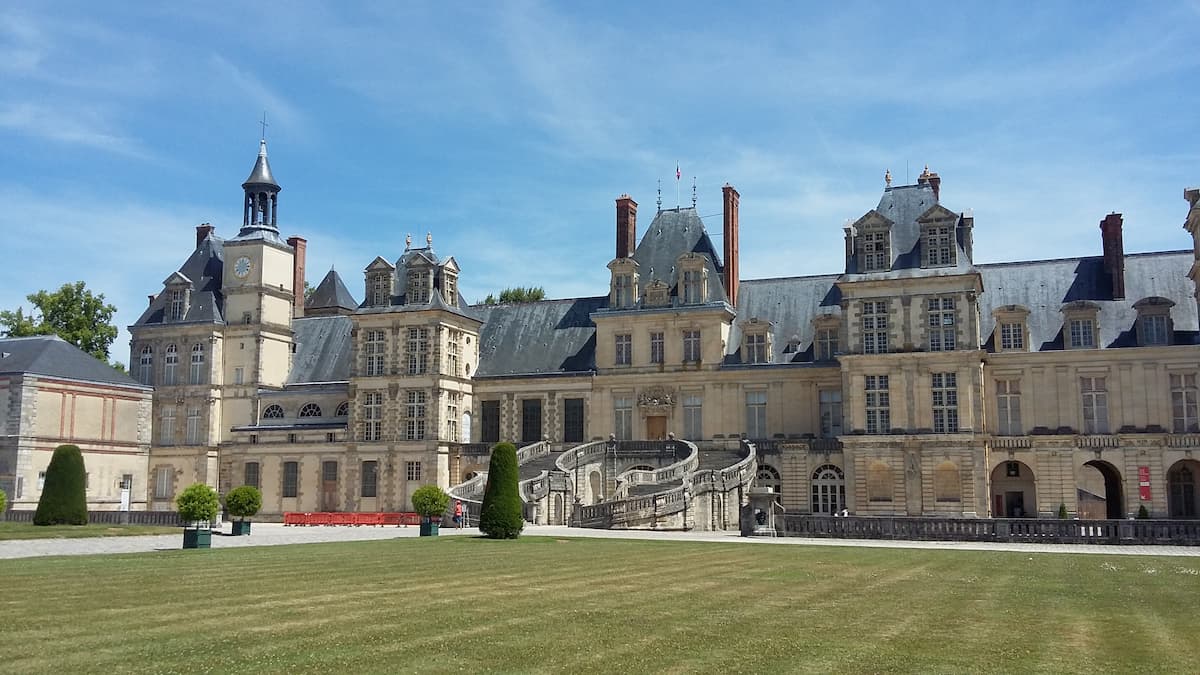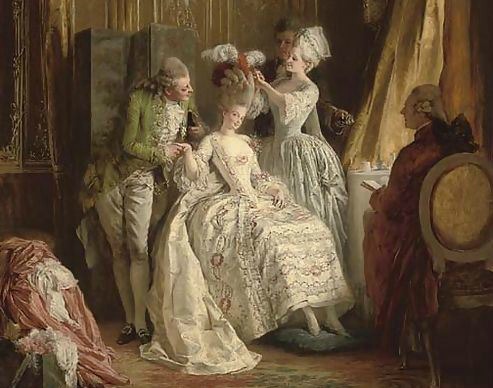Marie Antoinette's Bedroom
When Marie Antoinette arrived at Versailles Palace in 1770, aged 14, she entered a world frozen in time.
The palace, built by King Louis XIV over 130 years earlier, was a living museum. Not much has changed over time. The place is like a shrine, still glorifying the reign of the Sun King. The rigid protocol is even stricter and more complicated than the one at the
Habsburgs' court.
What adds to the museum feel of the place is all the elderly people that live there. There is a generation missing, as Queen Marie Leszczyńska, her son Louis, Dauphin of France and both his Dauphines are already dead. There are courtiers who have known the Sun King in Person, and he is already dead since 1715!
Despite the unfamiliar surroundings and strict rules, Marie Antoinette was a curious young woman. She did what every young woman would do in her situation. She went snooping around in her new domain. Let’s go with her.
DISCLOSURE: I get commissions for purchases made through some of the links in this article.
The Queen's bedchamber, Marie Antoinette's Bedroom in Versailles Palace
The queen's Bedchamber of Versailles is where she would spend a lot of time.
Today, the bedroom is a private retreat where one withdraws after a busy day. This was not the case in the time of Marie Antoinette. The bedroom was a public space, constantly bustling with people coming and going. Servants were always present, with one even sleeping at the foot of Marie Antoinette's bed.
Visitors would also come at various times during the day. The morning routine, from waking up to putting on her clothes, was a public spectacle known as the "petit coucher." There's a hilarious scene in the film Marie Antoinette that depicts this ritual. One by one, people enter the room, each vying for the honor of dressing the queen in her chemise. Meanwhile, Marie Antoinette stands completely naked, surrounded by a crowd.
No privacy also means that the whole court kissed the newlyweds goodnight on their weddingnight. E
After seven years of marriage, she gives birth to her children here, also accompanied by a room full of people.
It gets so crowded in the room that she can barely breathe.
Louis XVI has to fling open a window and order everyone out.
Before her, Queen Marie-Thérèse, wife of Louis XIV, and subsequently Marie Leszczyńska had undergone the same ordeal multiple times.
In fact, nineteen princes and princesses were born in this room!
When we go to Google maps and dangle the little yellow guy above the left-wing of the palace of Versailles, we land in the Queens's bedroom.
Use your mouse to look around in this image of the Bedroom of Marie Antoinette!
Marie Antoinette is no Queen yet when she arrives, but with all her predecessors' dead, she is the first lady of France.
That means that she is housed in the Queens's apartments immediately when she arrives.
Petit appartement de la Reine
Left to the immense posted bed, you can see the little door, disguised by wallpaper and panelling, that leads to the private intimate chambers of the queen. Here are a few smaller rooms, where she can withdraw from the ever-present public eye in the formal bedroom for a while.
Marie Antoinette used the bed in the Meridienne room mostly for snoozing in the afternoon.
Another bed can be found in the bathroom, this one she used for getting massages and beauty treatments. The bathroom is the only one in the palace with hot and cold water and even a toilet that flushed!
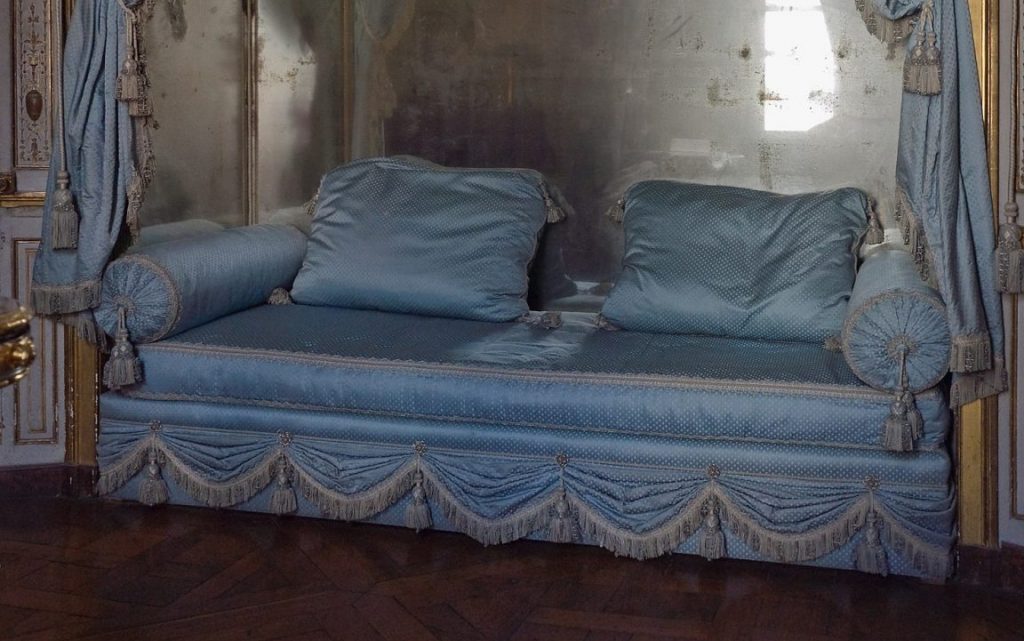 The queen's bed in the meridienne room
The queen's bed in the meridienne room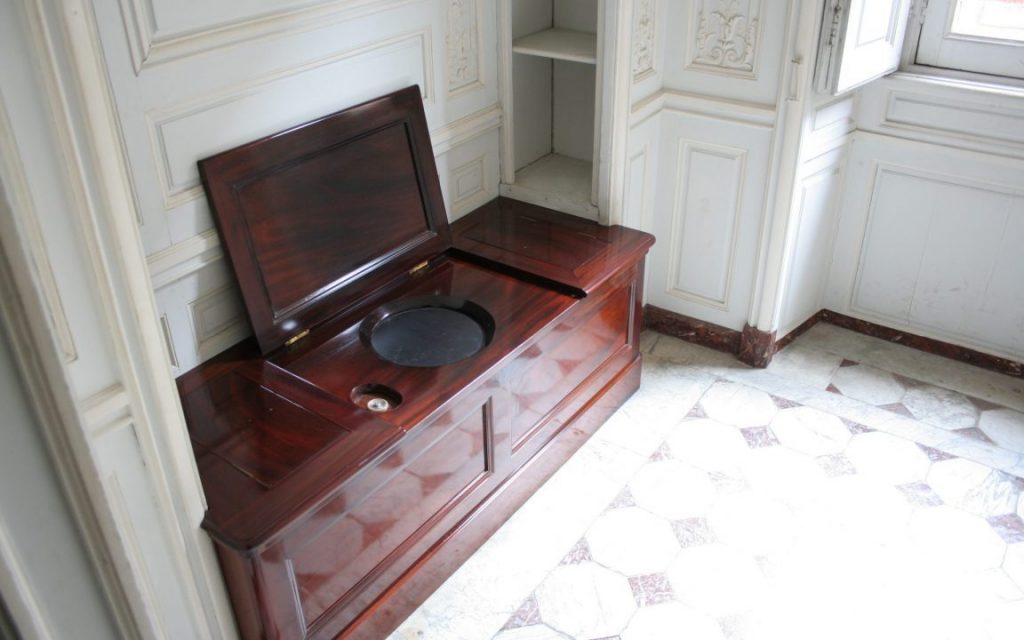 Marie-Antoinette's toilet
Marie-Antoinette's toilet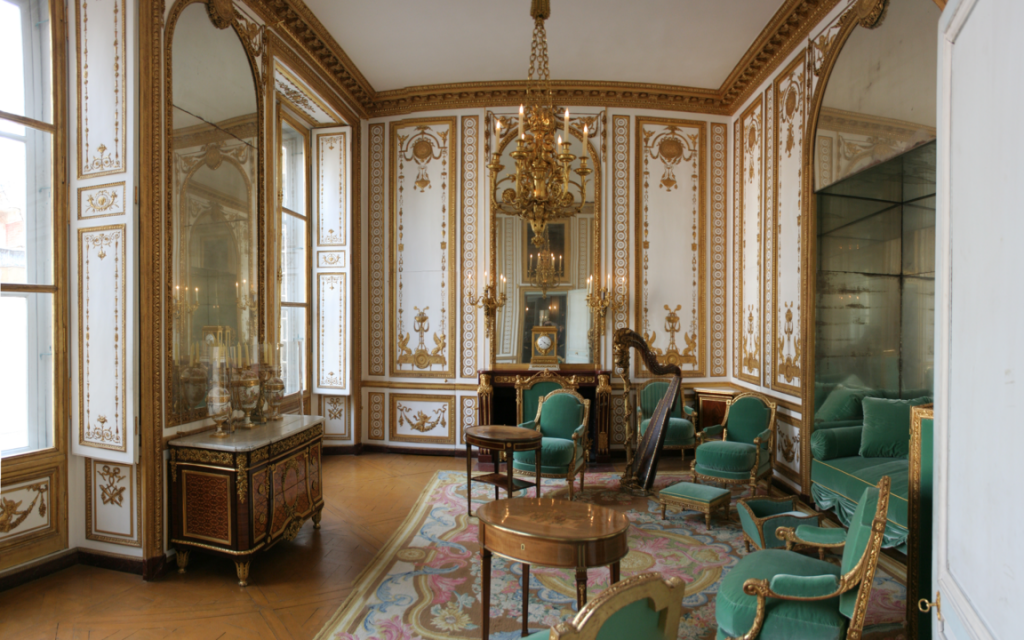 The Cabinet Doré of Marie-Antoinette
The Cabinet Doré of Marie-Antoinette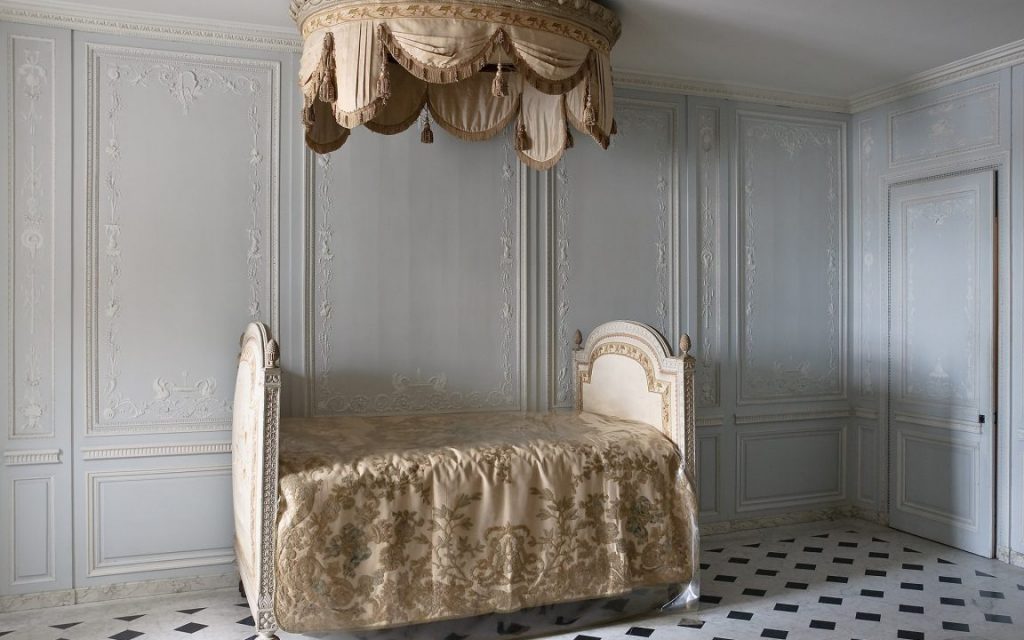 Versailles Bathroom in the Appartment of Marie Antoinette
Versailles Bathroom in the Appartment of Marie AntoinetteQueen's bedchamber Fontaineblue
All the queens of France, starting from Marie de Medici, stayed in this room at Fontaineblue Castle. And, here too, you can walk around it in 3d!
The bed as can be seen today is that of Marie Antoinette. On the headboard, you can see her initials. She did never sleep in it though, as it was only delivered after the revolution when Marie Antoinette was already executed.
It was Empress Josephine, and later Empress Marie-Louise, the wives of Napoleon, who used the bed. Most of the furniture and decoration also date from the First Empire.
Both these beds in the state bed-chambers of Versailles and Fontaineblue have little steps that are needed to climb into it.
They also have a gold railing in front of the bed. This gate designated the space where aristocrats could go during the rituals. Only the highest-ranking courtiers were allowed behind the fence.
The Petit Trianon bedchamber
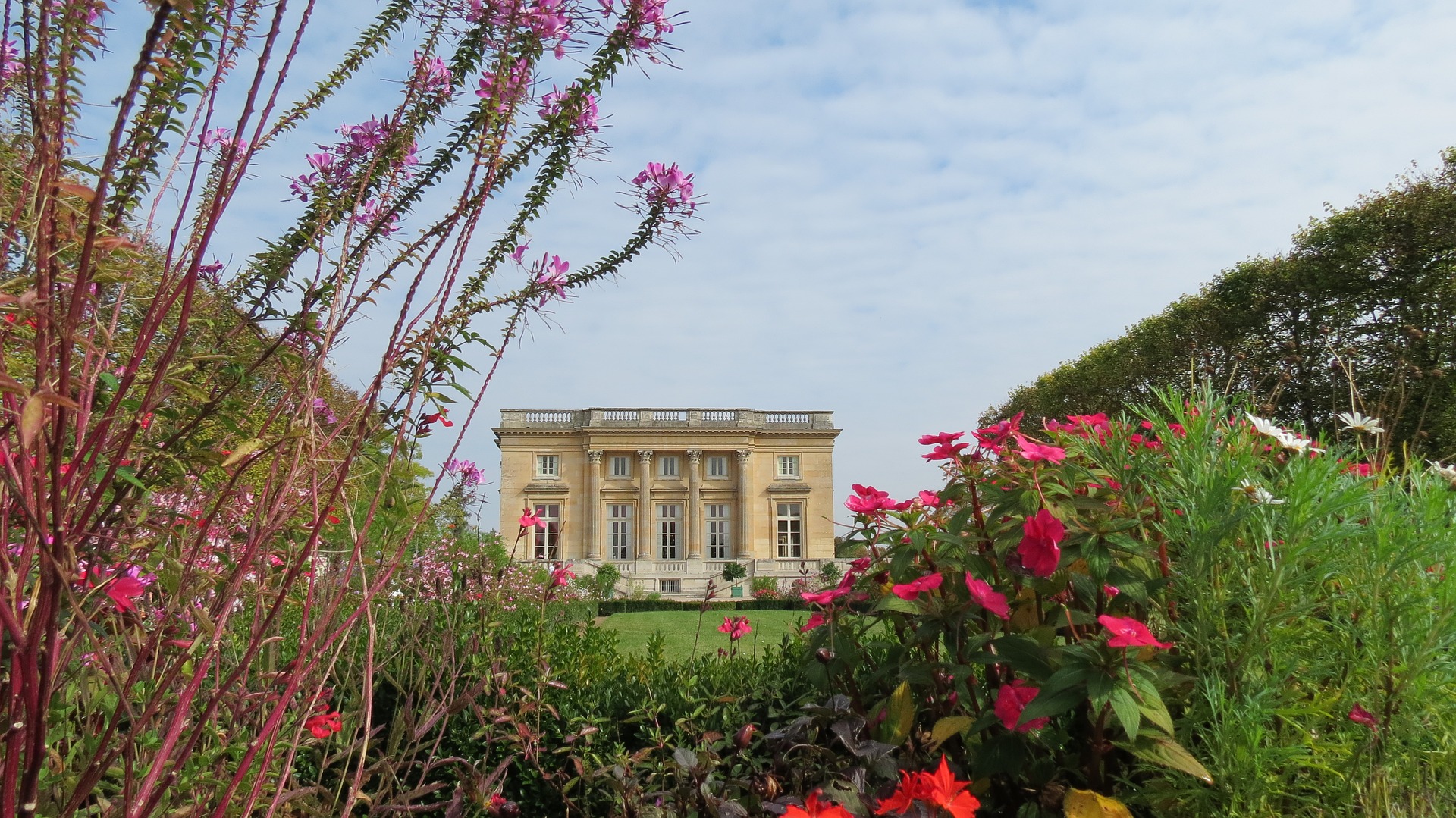 Versailles- Petit Trianon
Versailles- Petit TrianonNo doubt, the favourite bed that Marie Antoinette slept in was the one at the Petit Trianon.
This little gem became hers after she was crowned Queen in 1774. The place is quiet and private, just what she needs after living in the public eye in her Dauphine years. If Marie Antoinette ever had a love affair with Count Fersen, it would have taken place here. She only invited her closest friends to the Petit Trianon and only has 6 servants there.
The bedroom is small, cosy and tastefully decorated. To ensure the privacy of the queen, an innovative system was installed in the boudoir of the Petit Trianon, called the Glaces Mouvantes ( moving mirrors).
These moving mirrors can be lifted in front of the windows from the lower floor. A hidden mechanism allows these mirrors to slide along tracks, covering the two windows of the room. When the mirrors are in place, they create a perfectly enclosed space, providing Queen Marie-Antoinette with complete privacy.
Created in 1785 by Jacob, based on designs by the decorator Dugourc, these moving mirrors were a technological marvel of their time.
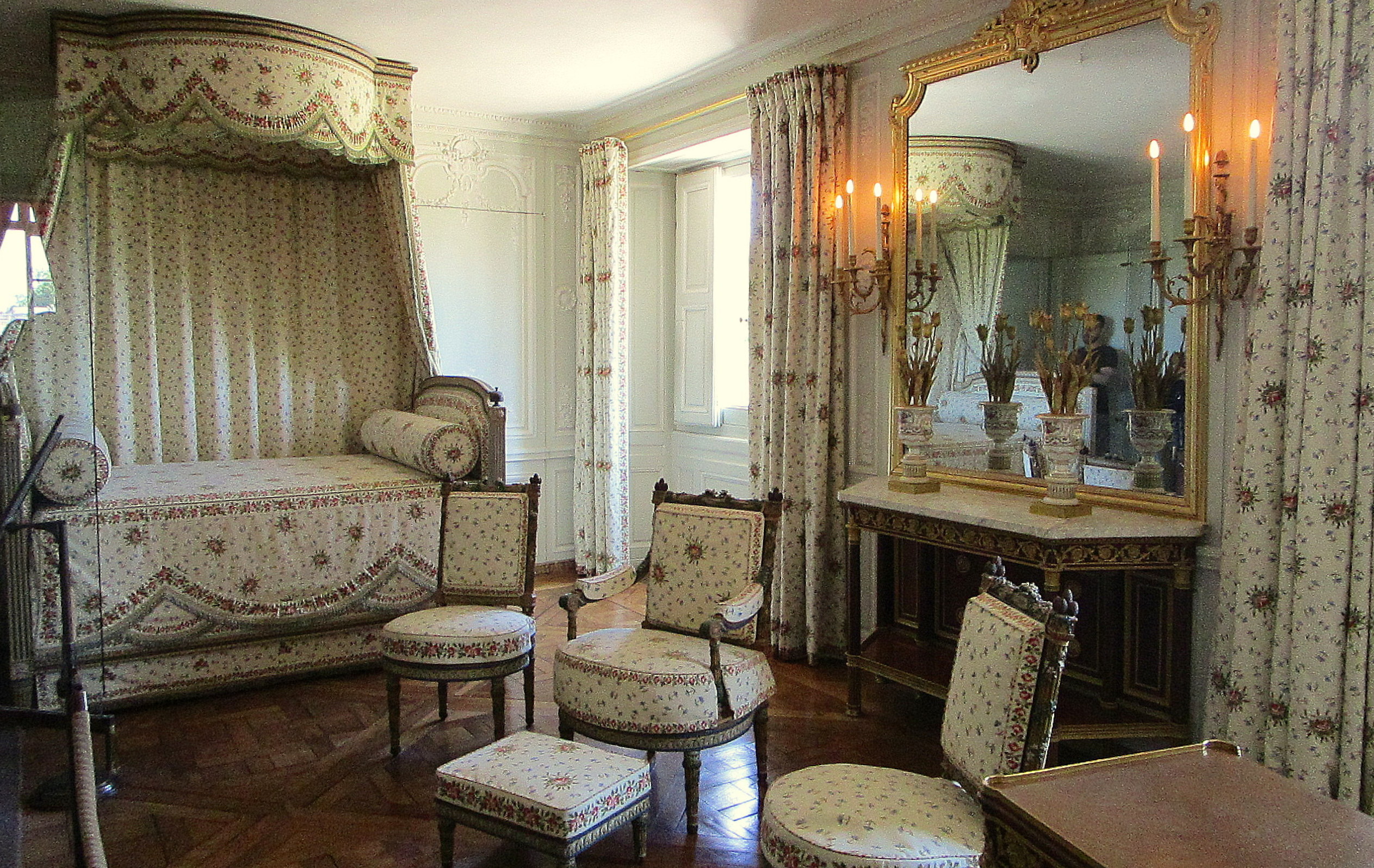 Bedroom in the Petit Trianon
Bedroom in the Petit Trianon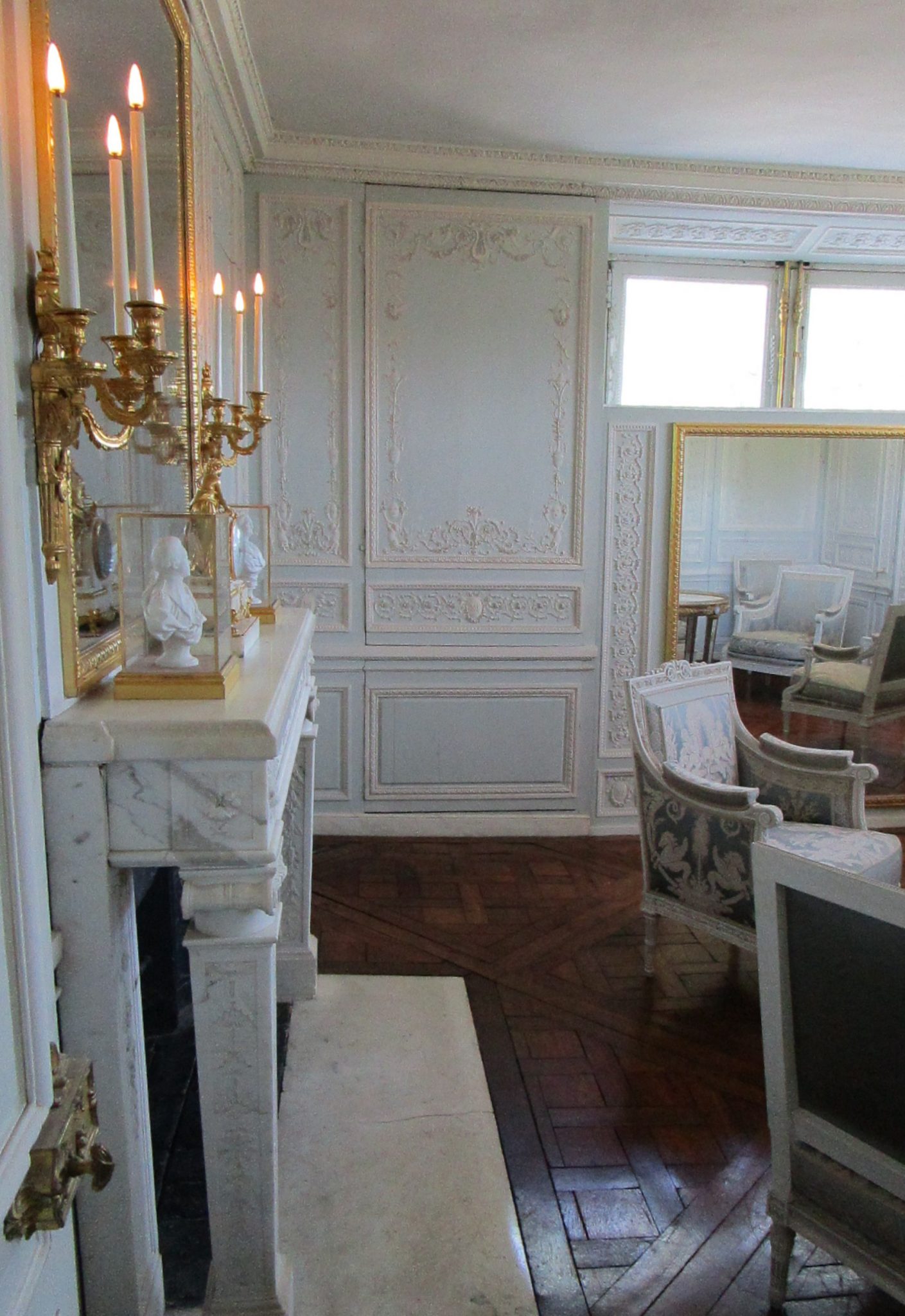 Mirrors half way up in the Boudoir of the Petit Trianon
Mirrors half way up in the Boudoir of the Petit Trianon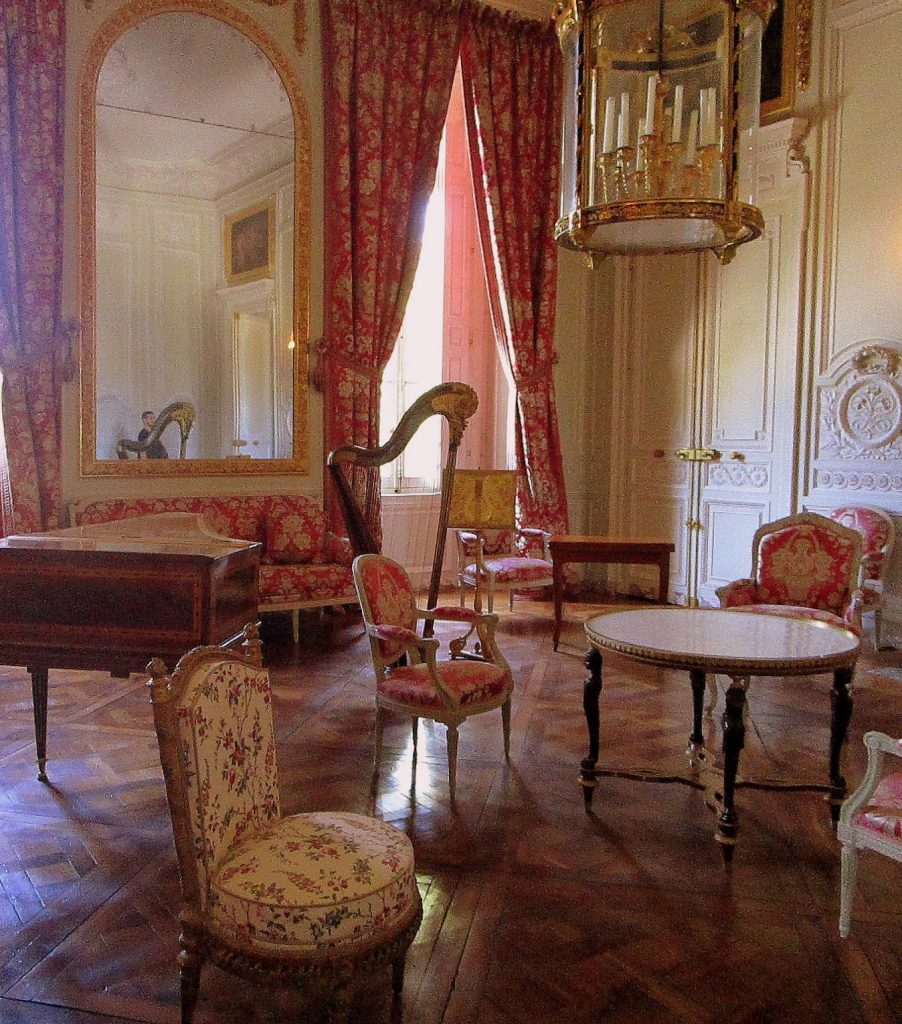 Petit Trianon Grand Salon
Petit Trianon Grand Salon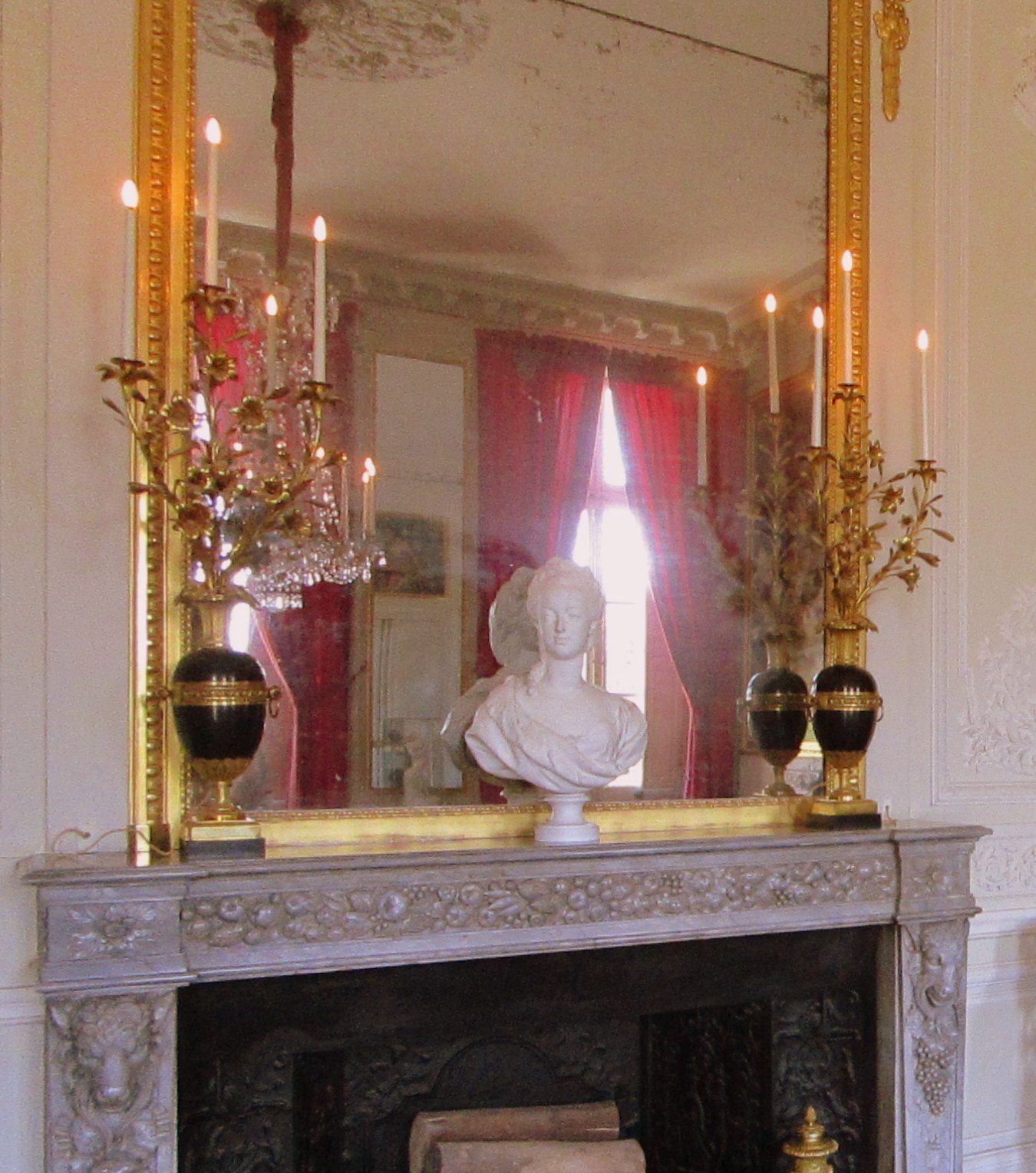
Marie Antoinette's Personal Touch
The differences between the interior of the state bedrooms and the rooms in the Petit Trianon are evident. The latter clearly bears the mark of Marie Antoinette.
Marie Antoinette's interior designs proove her great taste and feeling for style. Each room would have a fixed colour scheme, usually pale pastels in blue, pink or green. She loved floral designs in both her cloting and her interiors. Also the classics were returning in het designs.
Wooden panneling all around would sometimes be gilded, but it never became too much. The interiors that are designed under supervision of Marie Antoinette are usually rather tasteful in comparison to the opulent extravagance of the palaces.
Exploring Marie Antoinette's bedrooms provides a unique window into her personality and the historical context of her time. These rooms offer a fascinating glimpse into a world long gone. I love it that we can still visit them, in real or virtually!
